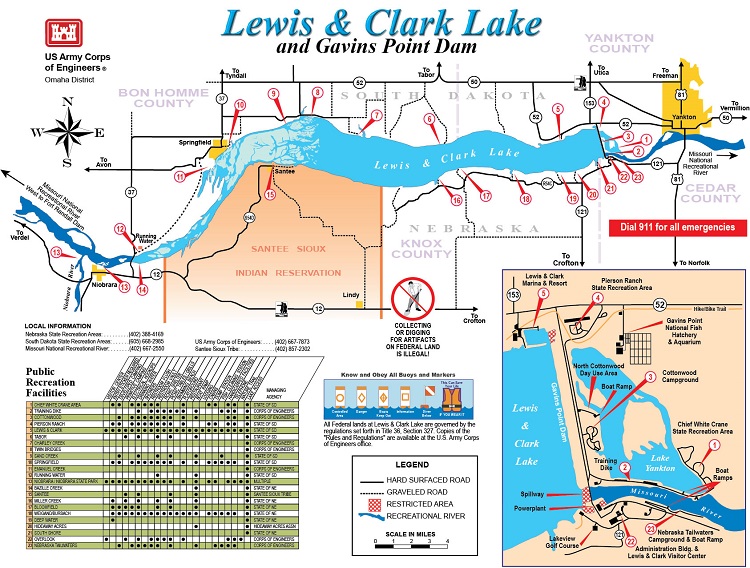
In November, the South Dakota Game, Fish and Parks staff discovered a single zebra mussel attached to a boat dock at the Midway boat ramp on Lewis and Clark Lake near Yankton, South Dakota. This finding came on the heels of the discovery of quagga mussels – another invasive mussel – in the Angostura Reservoir in southwest South Dakota, not far from the Nebraska border, in September.
"These newly discovered quagga and zebra mussels in South Dakota increase the need for formal boat inspection programs in both states to reduce the risk of the spread of these mussels to other water bodies," said Allison Zach, coordinator of the Nebraska Invasive Species Program. "Both states have limited funding and with the lack of a formal program to inspect the majority of water crafts, water bodies are at high risk for introductions of aquatic invasive species."
After inspecting 11 additional boat docks and shorelines, South Dakota staff found no additional zebra mussels in the lake. Several boats stored at a marina were also inspected and no mussels were found, although many boats had already been power-washed for storage.
"The Nebraska Game and Parks Commission and South Dakota staff have sampled the lake yearly for zebra and quagga mussel larvae, and all samples have been negative," Zach said.
Lewis and Clark Lake is a reservoir located between the Nebraska and South Dakota border. The lake is a U.S. Army Corps of Engineers project, and is managed by the South Dakota Game, Fish and Parks and the Nebraska Game and Parks Commission.
The heavily used lake features 27 recreation areas for boating, fishing, hunting and swimming. It is 25 miles long with a maximum depth of 45 feet and has 90 miles of shoreline. The lake was formed by the Gavins Point Dam in South Dakota, which is the smallest of the six Missouri River dams and the southernmost dam on the river, according to the U.S. Army Corps of Engineers.
"It is probable that this mussel came from a contaminated boat that launched at the site where the zebra mussel was found," Zach said. "As a result of this discovery and following the Western Regional Panel Policy, Lewis and Clark Lake is now classified as a suspect lake for zebra mussels, and will remain that way for a minimum of three years after sampling finds no additional mussels."
Currently, Nebraska has one invasive mussel infestation. In April 2006, Offutt Base Lake in Bellevue, NE became the first water body in the state with a confirmed population of zebra mussels. In 2008 and 2009, the lake was treated with copper sulfate in an effort to eradicate the population.
However, those treatments proved unsuccessful when zebra mussels at the lake were confirmed in July 2014. Offutt Base Lake is closed to motor boats to prevent the spread of these invasive mussels, but does allow the public to use their own non-motorized watercrafts.
The best way to prevent zebra mussels from spreading, Zach said, is to employ the "Clean, Drain and Dry" protocol for all boats, trailers and equipment between uses by following these steps:
• Inspect the boat, trailer and all equipment and remove any visible vegetation or organisms
• Pull boat plugs and drain live wells prior to leaving the water body
• Flush engine with water
• Dry boat and equipment for 5 days before launching into another water body
"We are very concerned about the zebra and quagga mussel infestations in surrounding states," Zach said. "With interstate boat travel, it is imperative to have a formal boat inspection program to inspect the majority of watercrafts at high risk waterbodies and have a large scale education program to teach the public how to 'clean, drain and dry' their boats."
For more information, visit http://www.neinvasives.com.
— Mekita Rivas, Natural Resources
More details at: http://neinvasives.com/